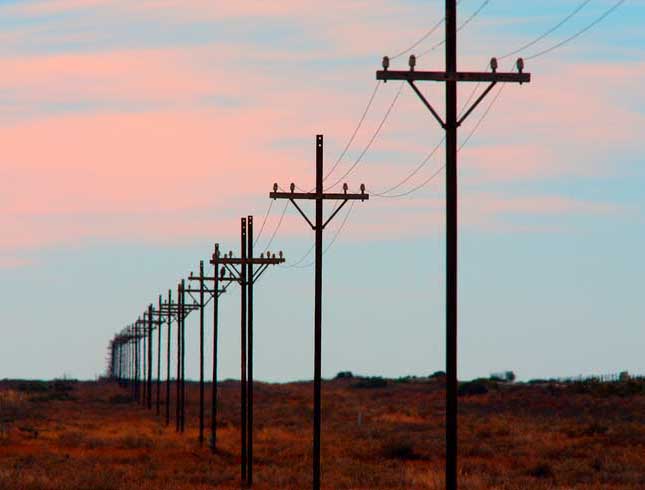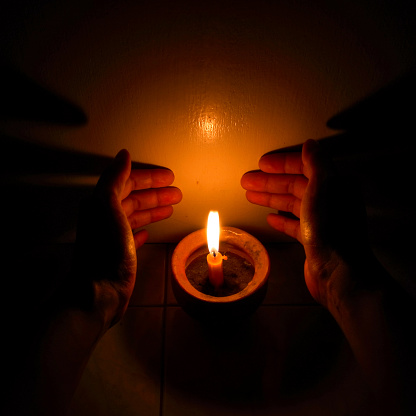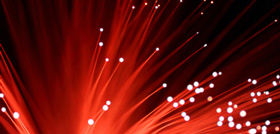 Many land and oceanic oil operations use temperature sensing to help improve safety and functionality in harsh environments. Optical fibers used in these conditions are routinely exposed to high temperatures and pressures, along with ionizing radiation and aggressive chemicals in the surroundings.
Many land and oceanic oil operations use temperature sensing to help improve safety and functionality in harsh environments. Optical fibers used in these conditions are routinely exposed to high temperatures and pressures, along with ionizing radiation and aggressive chemicals in the surroundings.
Given these extremes, companies are increasingly using silica-based optical fibers for both acoustic and distributed temperature sensing. These fibers offer advanced properties including superior thermal stability and mechanical robustness. They are also able to transmit optical power with minimal added attenuation or signal loss.
While researchers have thoroughly studied the mechanical strength of optical fibers under ambient conditions, they have rarely examined fibers after exposure to elevated temperatures and/or liquids. In fact, to the best of our knowledge, there is no systematic data documenting the mechanical strength of optical fibers placed under high temperatures and pressures such as those experienced in temperature sensing.
That’s why when Andrei Stolov of OFS decided to perform an experimental study, he was operating in somewhat “unknown territory.” Before beginning the experiment, Stolov realized that a number of factors would influence whether optical fibers could survive the harsh conditions found in oil operations. These aspects include the type of fiber coating, environment, temperature, pressure and usage time.
When optical fibers are used at elevated temperatures or in aggressive environments, the most frequent indications of failure are added attenuation or loss of mechanical strength. In Stolov’s study, he used strength degradation as his criteria for failure.
In his experiment, Stolov submerged a range of optical fibers with various coatings into four high-temperature/high-pressure fluids, namely (1) distilled water; (2) sea water; (3) isopropyl alcohol (IPA); and (4) paraffin oil. Undersea and downhole applications primarily drove his choice of fluids. In these situations, fibers can be exposed to these or similar environments.
To learn more about the study and the results, please go HERE.
 Fiber optic sensors could one day catch thieves who steal electricity and materials from overhead power lines. The UK firm Bandweaver recently demonstrated a distributed acoustic sensing (DAS) system that detects invasion and interruption on power lines. The system does this by using back-scattering effects along an optical fiber.
Fiber optic sensors could one day catch thieves who steal electricity and materials from overhead power lines. The UK firm Bandweaver recently demonstrated a distributed acoustic sensing (DAS) system that detects invasion and interruption on power lines. The system does this by using back-scattering effects along an optical fiber.
The Cost of Tampering
A major global problem is tampering and theft from power lines. In fact, this activity costs the electric industry an estimated $96 billion a year. Tampering can also interrupt power supplies and lead to operating losses for power companies and national grids.
Detecting and identifying theft when it first happens is the key to solving this problem. The power industry generally sees current solutions as time consuming, inefficient and expensive.
The Demonstration
Working with Dominican Republic power company ELESUR and an infrastructure firm, Bandweaver installed its system at an ELESUR sub-station in Santo Domingo. The team hoped to show how the photonics technology could locate and identify any tampering with overhead lighting and distribution poles connected to a fiber optic cable. They believed that by continually watching just one optical fiber, the system could monitor the entire route for real-time threats 24/7 using existing fiber optic cables.
The team installed the system and waited. When power company employees created different types of disturbances at random power line locations, the DAS system detected and located each problem.
Conclusion
Bandweaver believes that the demonstration’s success proved the ability of its system. The DAS system identified the exact location of each incident and then sent specific information to security systems and alerted company staff.
Possibly the greatest value of the system is that it alerted the power company when a threat began. This “heads up” notification could help companies act before major damage is done. And this capability could help to reduce costs and improve system operations.

Interested in fiber optic sensing? If so, you’ll want to check out the “Tales From the Front Line of Fiber Optic Sensing” webinar presented by OptaSense and sponsored by the Fiber Optic Sensing Association (FOSA).
Whether it’s detecting pipeline leaks, damage to railroads or intrusion at critical facilities, fiber optic sensing plays an increasingly important role in protecting and keeping key infrastructure assets operating globally.
The webinar features fiber optic sensing installations across a wide range of industry verticals, applications and locations, including system action videos with the challenges and successes of actual deployments.
To download and view this webinar, go here.
To subscribe to the FOSA e-newsletter, go here.

Leading experts from OFS will present six technical papers at the first-ever UL and IWCS China Cable & Connectivity Symposium in Shanghai, China, from April 25 through April 27, 2017.
These presentations will cover a wide range of subjects from acrylate-based, harsh environmental coatings for specialty optical fiber to high-speed, SWDM transmission over Wideband Multimode Fiber.
To learn more about these technical papers and the Symposium, go here.

In the United States, Halloween is a time when young children dressed as tiny ghosts, goblins and even superheroes knock on neighborhood doors, repeatedly yelling the benign threat of “trick or treat.”
With Halloween retail spending projected to reach $8.4 billion in 2016, this night has also become one of the biggest unofficial holidays of the year for adults, with parties and celebration galore.
However, on another Halloween night not so long ago, millions of unsuspecting New Englanders had no warning that a true utilities nightmare was about to unfold.
We invite you to read on as guest blogger Natasha Juhasz (OFS Social Media, PR and Project Manager), weaves her tale of “A Halloween Blackout in New England.”

The commercial use of optical fiber in harsh environments is continually growing. These applications include medical probes that undergo sterilization at elevated temperatures and distributed sensors in oil and gas pipelines and wells exposed to extreme heat and cold. For these fibers to be used successfully, researchers and manufacturers must address the issues of fiber performance and reliability under the harshest conditions.
However, current theories and knowledge on the strength and dependability of silica-based optical fiber have been based almost exclusively on experiments conducted in optical telecommunications environments. Moreover, these tests only used a relatively narrow range of temperatures. For usage in extreme environments, fiber developers and users need new data and information.
In a recent white paper from OFS Specialty Photonics, researchers describe a setup for testing the tensile strength of optical fiber when exposed to high temperatures. This paper also reports the initial results of dynamic tensile strength testing conducted on polyimide-coated optical fiber at elevated temperatures over various time intervals.
To learn more and access this white paper, CLICK HERE.
 Many land and oceanic oil operations use temperature sensing to help improve safety and functionality in harsh environments. Optical fibers used in these conditions are routinely exposed to high temperatures and pressures, along with ionizing radiation and aggressive chemicals in the surroundings.
Many land and oceanic oil operations use temperature sensing to help improve safety and functionality in harsh environments. Optical fibers used in these conditions are routinely exposed to high temperatures and pressures, along with ionizing radiation and aggressive chemicals in the surroundings.
 Fiber optic sensors
Fiber optic sensors


